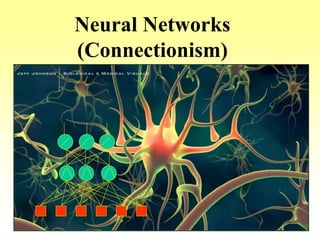1. The document describes an introductory course on neural networks. It includes information on topics covered, textbooks, assignments, and report topics.
2. The main topics covered are comprehensive introduction, learning algorithms, and types of neural networks. Report topics include the McCulloch-Pitts model, applications of neural networks, and various learning algorithms.
3. The document also provides background information on biological neural networks and the basic components and functioning of artificial neural networks at a high level.




















































































![85
Neural network input normalization
Real input data values are standardized (scaled),
normalized so that they all have ranges from 0 – 1.
valueattributepossiblelargesttheisuemaximumVal
attributefor thevaluepossiblesmallesttheisueminimumVal
convertedbetovaluetheislueoriginalVa
rangeinterval[0,1]theinfallingvaluecomputedtheisnewValue
where
ueminimumValuemaximumVal
ueminimumVallueoriginalVa
newValue
](https://image.slidesharecdn.com/lec-1-2-3-intr-200207114302/85/Lec-1-2-3-intr-85-320.jpg)
























